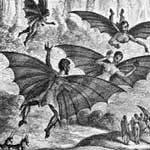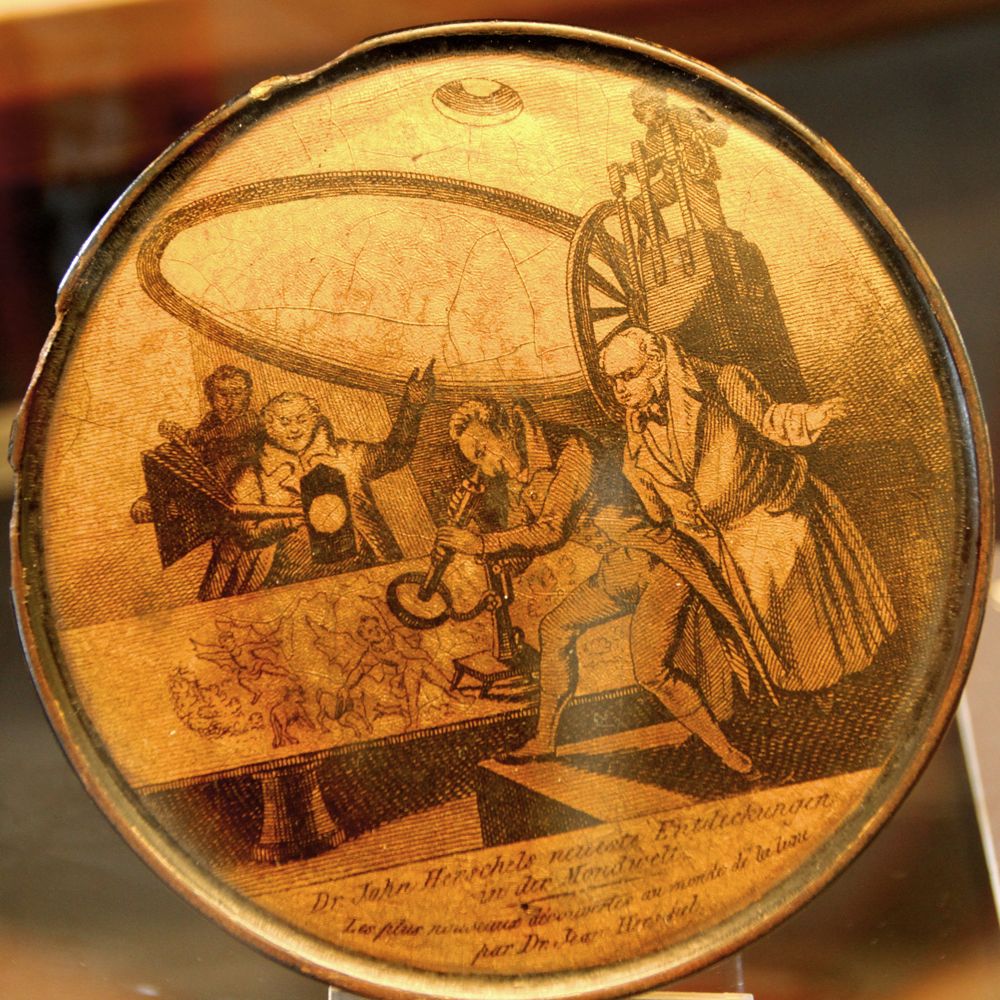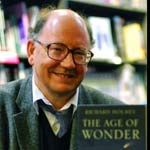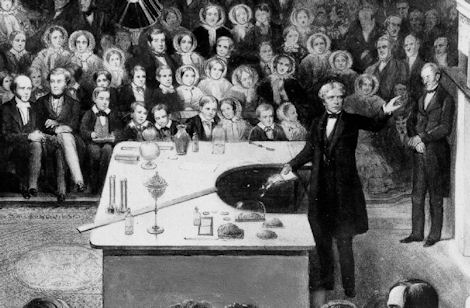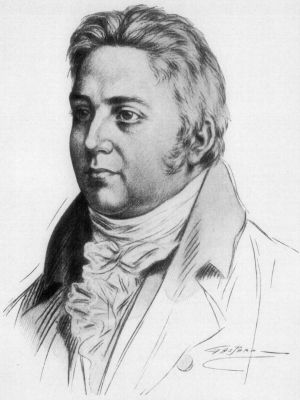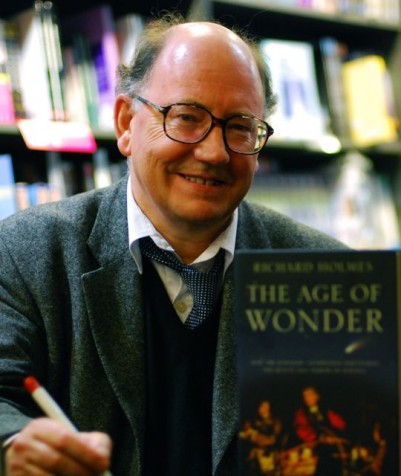The fantastic weather in Oxford yesterday meant museum visits took a back seat to a good punting session on the Cherwell (a violation of physics in its own right with me at the helm).
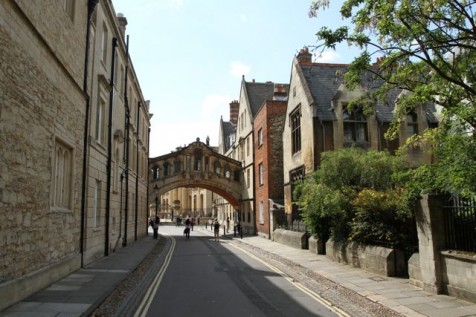
But we did get a half hour in the Museum of the History of Science , where I snapped this papier mache box lid, a great early example of newspapers not letting facts get in the way of a good story. For what they lacked in hacking scandals in 1835, they made up for in hoaxing, in stories like the one to which this exhibit relates: The Great Moon Hoax.
The picture is a satirical sketch of the astronomer Sir John Herschel, in a scene based on a series of reports by Richard Adams Locke for the New York Sun in 1835, supposedly describing observations made by Herschel at his South Africa observatory.
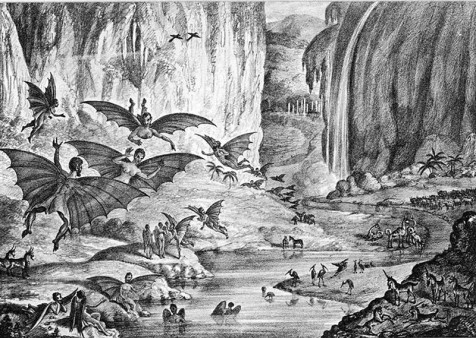
You can read up on the detail at the museum of hoaxes), but in this rendition, which is new to me, I particularly like the weird equipment combo Herschel’s minions are wielding around him: some sort of camera obscura / microscope mash-up by the looks of things. Maybe those instruments were more familiar than telescopes? Or, more likely, the journo just let his imagination get the better of him. Either way, I guess it’s still the little winged moon-men that steal the show.
The exhibit put me in mind of two lectures on a similar tack I enjoyed in the Royal Society’s History of Science series. You might like to check them out:
‘Fleas, lice, and an elephant on the moon’ by Dr Felicity Henderson (Sept 24 2010)
‘The Telescope at 400: a Satirical Journey’ by Richard Dunn (April 24 2009)
(both can be found by tracking down to the correct dates at the Royal Society podcast/vidcast page here).
